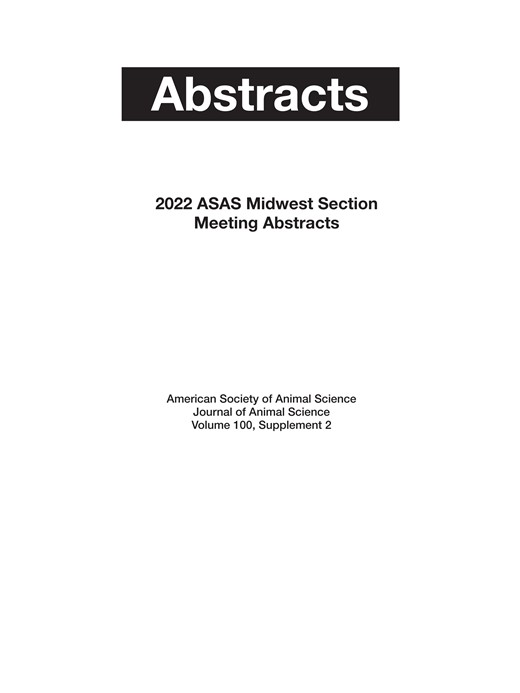-
PDF
- Split View
-
Views
-
Cite
Cite
Phillip A Lancaster, 215 Assessment of Equations Relating Carcass Chemical Components in Growing/Finishing Cattle, Journal of Animal Science, Volume 100, Issue Supplement_2, May 2022, Page 104, https://doi.org/10.1093/jas/skac064.174
Close - Share Icon Share
Abstract
Existing equations to estimate chemical composition of cattle were developed over 40 years ago using different cattle genetics. The objective of this analysis was to evaluate existing equations using cattle genetics from then to today. A literature search was performed to identify experiments measuring carcass chemical composition by proximate analysis resulting in 106 treatment means from 10 experiments since 1976. Four sets of equations were used to compute carcass chemical composition assuming carcass water was known: 1) Garrett and Hinman (1969; 10.2527/jas1969.2811), 2) Gil et al. (1970: 10.2527/jas1970.313459x), 3) Preston et al. (1974; 10.2527/jas1974.38147x), and 4) Ferrell et al. (1976; 10.2527/jas1976.4251158x). Mean (SD) carcass water, fat and protein were 57.19 (7.20), 20.49 (8.87), and 17.80 (2.90) % of HCW, respectively. For all equations, simultaneous testing of intercept equal to zero and slope equal to 1 indicated that the intercept and slope for fat, protein, ash and energy were different than zero and one, respectively. The concordance correlation coefficient (CCC) was high (> 0.85) for fat and energy, but low (< 0.40) for protein and ash for all equations. Mean bias for fat, protein, ash, and energy ranged from -8.84 to -0.09%, 2.02 to 8.68%, -13.35 to 12.35%, and -3.50 to 0.79%, respectively, with Eq. 1 having the MB closest to zero for ash, Eq. 3 having the MB closest to zero for fat and protein, and Eq. 4 having the MB closest to zero for energy. Publication year as a continuous variable was a significant (P < 0.05) predictor of the difference between observed and predicted values for all components using all equations. Fat and energy had greater overprediction whereas, protein and ash had greater underprediction in more recent publications. In conclusion, existing equations provide similar precision, but differ in accuracy to predict carcass chemical composition. The trend for greater bias in more recent publication years indicates the need to reevaluate relationships among carcass chemical components using current cattle genetics.



